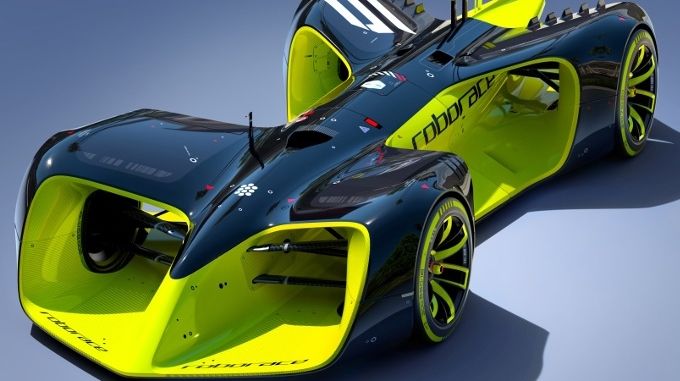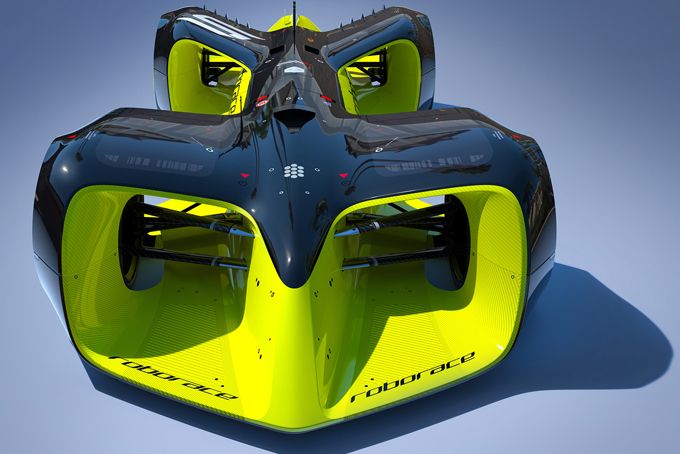In late 2015, it was announced that a new racing series with autonomous cars->ke5282 will be launched in 2016. It will be called Roborace and will act as a support series for the all-electric Formula E->ke4660 championship. With the next Formula E season only six months away, more details about the series and the self-driving race car->ke148 are now available.
Although actual specs of the vehicle are still under wraps, Roborace announced its chief design officer as Daniel Simon. Known for his work as a vehicle concept->ke169 designer on Hollywood films "Tron: Legacy and Oblivion", as well as his popular "Cosmic Motors" book, Simon has also designed a number of road-going vehicles, race car liveries, and even motorcycles. Notable projects include several cars for Seat->ke80 and Lamborghini->ke44 under the supervision of Walter de Silva, the Bugatti Veyron Hermes, the Lotus C-01 motorcycle, and the liveries of the Lotus LMP2 and Hispania Racing F1 cars.
At Roborace, the 41-year-old was tasked with creating the all-electric car->ke1030 that will bring autonomous technology->ke1701 to the race track. Although the self-driving vehicle is still under development, Roborace has already published photos of the prototype. Not surprisingly, given Simon's previous work, the Robocar looks as futuristic as they get. It mixes the familiar design of Formula E cars with a bit of the Chevrolet Chaparral 2X VGT concept, with some wild results. Devoid of a traditional cockpit, this thing looks like a rocket with fenders and wheels. It makes me wish current Formula One->ke190 and Formula E single-seaters had a similar design.
The setup might change, however, as Roborace moves closer to its debut season. According to Simon, the cars will be modified to include active body parts that are "more organic and seamless than solutions today." Details are scant, but expect some groundbreaking technology to evolve from this. No info as to what will motivate the self-driving race car, but it could receive a drivetrain similar to that used in Formula E cars.
Continue reading for the full story.
Why it matters
When I first heard of the Roborace series I didn't expect a race car this futuristic, but a modified version of current Formula E designs. I'm glad I was wrong because it seems that Roborace and its collaboration with Daniel Simon could spawn a few revolutionary designs in terms of aerodynamics, as well as a new approach toward active body parts. Like any technology developed for the race track, it could be transferred to road-going cars almost immediately and the end result could mean faster and more efficient vehicles. Naturally, the Robocar's real-time computing algorithms and artificial intelligence will also make production self-driving cars not only better performance-wise, but safer too. If autonomous race cars can be safe and avoid collisions at speeds of over 100 mph, road-legal models should have no problem keeping their passengers safe at significantly slower speeds. Sure, I still think that a racing series with no driver input won't be all that fun to watch, but I can't ignore the fact that Roborace could have a big impact on the automotive industry in a couple of years.


